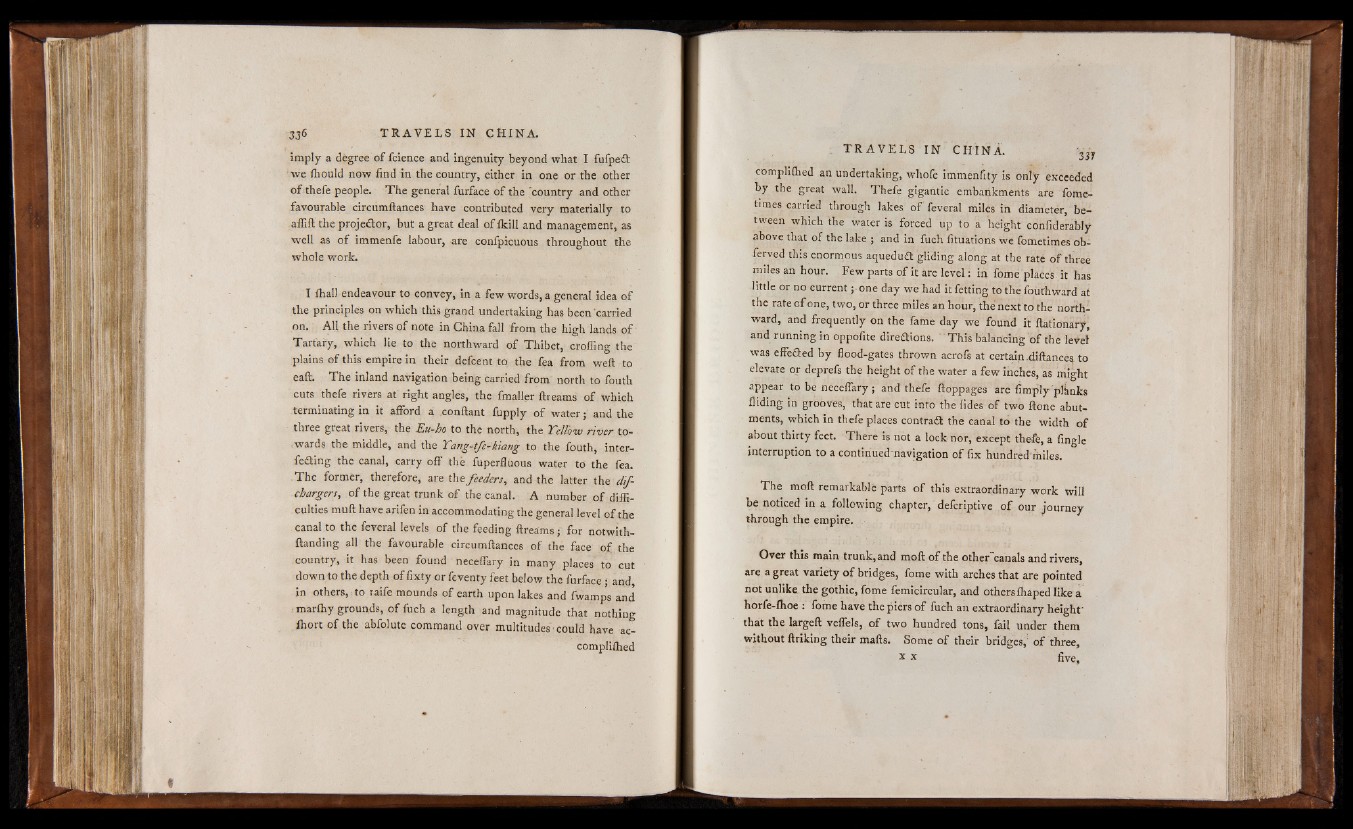
imply a degree o f fcience and ingenuity beyond what I fufpeft
we fhould now find in the country, either in one or the other
o f thefe people. T he general furface o f the "country and other
favourable circumftances have contributed very materially to
aflift the projector, but a great deal o f ikill and management, as
well as o f immenfc labour, are confpicuous throughout the
whole work.
I ihall endeavour to convey, in a few words, a general idea o f
the principles on which this grand undertaking has been carried
on. All the rivers o f note in China fall from the high lands o f
Tart'ary, which lie to the northward o f Thibet, croffing the
plains o f this empire in their defcent to the fea from weft to
eaft. The inland navigation being carried from north to fouth
cuts thefe rivers at right angles, the fmaller ftreams o f which
terminating in it afford a conftant fnpply o f water ; and the
three great rivers, the Eu-ho to the north, the Yellow river towards
the middle, and the Yang-tfe-kiang to the fouth, interfe
r in g the canal, carry off thè fuperfluous water to the fea.
The former, therefore, are tht feeders, and the latter the dif-
chargers, o f the great trunk o f the canal. A number o f difficulties
muft have arifen in accommodating the general level o f the
canal to the feveral levels o f the feeding ftreams ; for notwith-
ftanding all the favourable circumftances o f the face o f the
country, it has been found neceffary in many places to cut
down to the depth o f fixty or feventy feet below the furface ; and,
in others, to taife mounds o f earth upon lakes and fwamps and
marfhy grounds, o f fuch a length and magnitude that nothing
ihort o f the abfolute command over multitudes could have accomplifhed
«
complifhed an undertaking, whofe immenfity is only exceeded
by the great wall. Thefe gigantic embankments are fome-
times carried through lakes o f feveral miles in diameter, between
which the water is forced up to a height confiderably
above that of the lake ; and in fuch fituations we fometimes ob-
ferved this enormous aqueduit gliding along at the raté o f three
miles an hour. Few parts o f it are level : in fome places it has
little or no current ;• one day we had it fetting to the fouth ward at
the rate o f one, two, or three miles an hour, the next to the northward,
and frequently on the fame day we found it ftationary,
and running in oppofite dire&ions. This balancing o f the level
was effeâed by flood-gates thrown acrofs at certain diftancês. to
elevate or deprefs the height o f the water a few inches, as might
appear to be neceffary; and thefe ftoppages are fimply plhnks
Aiding in grooves, that are cut into the fides o f two ftone abutments,
which in thefe places contrail the canal to the width o f
about thirty feet. There is not a lock nor, except thefe, a fingle
interruption to a continued'navigation o f fix hundredmiles.
The moft remarkable parts o f this extraordinary work will
be noticed in a following chapter, defcriptive o f our journey
through the empire.
Over this main trunk, and moft o f the other canals and rivers,
are a great variety o f bridges, fome with arches that are pointed
not unlike the gothic, fome femicircular, and others fhaped like a
horfe-Ihoe: fome have the piers o f fuch an extraordinary height'
that the largeft veffels, o f two hundred tons, fail under them
without ftriking their malls. Some o f their bridges,1 o f three,
x x five,